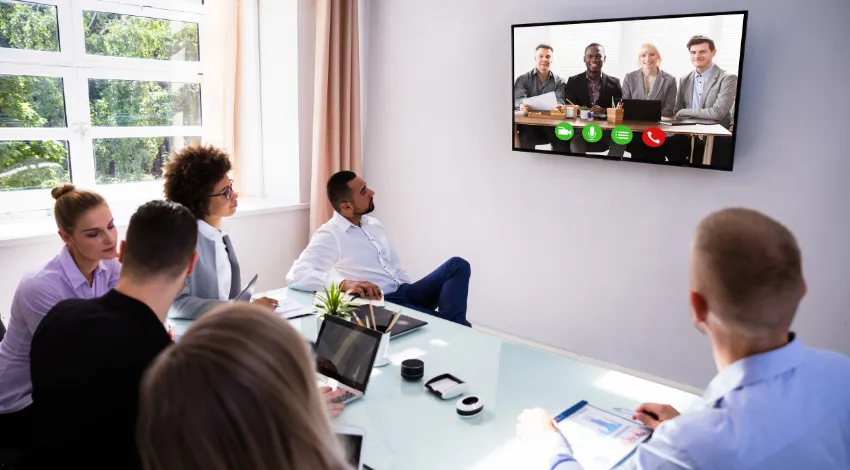3 Efficient Tools for Conferencing
Your meetings can only be successful if people pay attention, and are able to follow along. If you have the right audiovisual technology at your disposal, you can make sure your audience is engaged. Even the type of screen you use can have an impact.
In this article, we’ll show you how technology can make your meetings more efficient.

1. Video Conferencing Software
This software is perhaps the most important tool of all for virtual meetings. You might choose to use Zoom, Google Meet, Microsoft Teams, or something else entirely. It all depends on which of the available options works for you.
Video conferencing programs have a number of useful features, including:
- Screen-sharing.
- Meeting recordings.
- Background blurring.
- Virtual whiteboards.
- Breakout rooms.
- Meeting moderation.
These applications are typically free. However, you’ll need a premium package to unlock better (and more business-friendly) features. For example, Zoom limits meetings to 40 minutes — this will not always be enough time.
If you have a partly or fully-remote team, these tools help you keep everyone in the loop. For the former, these solutions are still useful for showing an in-person meeting’s live feed.
2. Cloud-Based File Sharing
In a meeting or conference, you might need to refer to a file. Cloud-based services let you share files freely among the participants. They’ll also be able to see any edits in real-time. This can be a strong alternative to screen-sharing if that’s not practical.
Collaboration is a good way to foster engagement while conferencing with the team. Anybody in the meeting could leave notes on, or even change, the document. Cloud storage might also use an external solution that isn’t dependent on the company’s servers.
On the topic of cloud services, this automatically saves any changes. You’ll also be able to go to previous versions of a file with ease. In addition, cloud-based file platforms can often integrate directly with video conferencing software.
3. Multi Viewers
With a multi-viewer, you can display (and view) several feeds at once. This combines them on a single screen, acting as a “central hub” for different video sources.
You might use this to display feeds from multiple meetings at the same time, if necessary. You’ll also be able to show a document and a video call on-screen simultaneously.
Multi-video viewers are great for preserving a meeting’s flow. Switching from one screen/display to another takes time. It can also lead to technical problems. These tools will ensure an entirely seamless experience for the whole room.
Someone can even monitor the call or meeting and choose the best angle in real-time. This can be especially helpful if the speaker is moving around a room.
Final Thoughts
Technology can enhance any meeting, whether it’s in-person or online. The tools you use could be what determines your audience’s engagement. When you might be delivering mission-critical information, you can’t take chances.
Everything from Zoom, to multi viewers can have an effect. Make sure you use the AV tech you need for a successful meeting.
